 April 30, 2020 John E. Ross, KD8IDJ, Editor
| |||||||||||||||||||||||||||||||||||
COVID-19 Impact & News Find the latest news and information on the impact of the coronavirus pandemic to ARRL members and our global amateur radio community. Emergency Ventilator Designed and Constructed by Hams Going to FDA Radio amateurs have succeeded in providing a complete, working ventilator system to University of Florida researchers who are in the process of applying to the Food and Drug Administration for an Emergency Use Authorization (EUA). A successful submission would blaze the way for volunteers and manufacturers around the world to create low-cost, highly functional Intensive Care Unit (ICU) or anesthesia-care ventilators that offer many of the features of modern
ventilators at a fraction of the typical cost. Dr. Gordon Gibby, KX4Z, who is associated with the project, said efforts to further improve the device are ongoing. "We made a stunning improvement in accuracy of the system and measuring volumes last night at about 1 AM," he told ARRL. "Accuracy of that particular alarm measurement went from about 300%, down to about 10%. The FDA submission is being readied, but we keep making engineering improvements." Gibby credited some of the primary volunteers. "Bob Benedict, KD8CGH, has provided incredible volunteer testing, now exceeding 1.6 million cycles on one crucial valve and 300,000 on another. Jack Purdum, W8TEE, is the main 'code-cleaner' for one of multiple teams building software, following the initial lead of Marcelo Varanda, VA3MVV. Ashhar Farhan, VU2ESE, not only created the ventilator controller schematic but the printed circuit board layout that will be part of an expected University of Florida submission." Farhan was among the founding code writers of what we now know as Voice over Internet Protocol (VoIP). Other hams worked on mechanical designs for flow measurements and retooled potential manufacturing capabilities otherwise used to produce transceivers. In another example of ham radio ingenuity, Marc Winzenried, WA9ZCO, modified a readily available lawn sprinkler to serve as a durable expiratory valve. This development enabled the ventilator to go more than 1 million breaths before significant valve issues developed, and the part can be replaced for less than $15.
The completed prototype in Florida was built using typical tools by a radio amateur, and assembled boards provided by LifeMech, a manufacturer working with the project. Farhan crafted an extendable menu structure for the Arduino Nano-based controller, and gas-flow measurements are made every few milliseconds by an I2C-based differential pressure transducer that can measure down to tiny PSI fractions, allowing the design to accurately track patient-induced variations in the volume of delivered gasses. "Using Wenzenried's expiratory valve, electronic on-off control at the rate of 30 Hz allows modulation of the valve to set the continuous airway pressure used to keep the patient's lung alveoli open against virus-induced water-logging of the connective tissue," Gibby explained. "Perhaps the most surprising development was the addition of the ability to sense patient effort to take a breath and immediately switch to assisting the patient with that breath, known as 'assist-control' ventilation," Gibby said. "This is expected to allow far lighter sedation of patients -- potentially even no sedation." Read more. ARISS Experiments with School Contacts Using "Multipoint Telebridge" Approach Amateur Radio on the International Space Station (ARISS) is hoping to adopt a concept it's calling the "multipoint telebridge contact via amateur radio" that will allow stay-at-home students to take part in amateur radio contacts with members of the space station crew. Its initial success on an April 30 contact with youngsters in Northern Virginia should provide some impetus for the initiative. ARISS has used telebridge stations in the past to enable contacts at times when the ISS orbit does not pass overhead to permit a direct radio contact with the school or other location. In a conventional ARISS telebridge contact, an amateur station ground station in a "During the last several weeks, efforts to contain the spread of the COVID-19 virus have resulted in massive school closures worldwide," ARISS said this week in a news release. "In addition, the stay-at-home policies invoked by authorities initially shut down opportunities for ARISS school contacts for the near future." The April 30 event involved 5-to-10-year old pupils. Fred Kemmerer, AB1OC, in Hollis, New Hampshire, who served as the telebridge ground station, linked with a ISS crew member via radio. Homebound students and their teacher were able to take part individually via the telebridge network. Under the teacher's direction, each at-home student was to take a turn to ask the astronaut one question on a prepared list, although unrelated technical issues aboard the ISS curtailed the contact. "This approach is a huge pivot for ARISS, but we feel it is a great strategic move," said ARISS-International Chair Frank Bauer, KA3HDO. "In these times of isolation due to the virus, these ARISS connections provide a fantastic psychological boost to students, families, educators, and the public. And they continue our longstanding efforts to inspire, engage, and educate students in STEAM [science, technology, engineering, the arts, and mathematics] subjects and encourage them to pursue STEAM careers." -- Thanks to ARISS Resolving Sunspot Number Confusion Recently, well-known contester and DXer Frank Donovan, W3LPL, reviewed NOAA's official updated solar cycle prediction. Noted propagation authority Carl Luetzelschwab, K9LA, followed up. In his discussion, Donovan commented that the International Sunspot Number is typically about one-third lower than the Space Weather Prediction Center (SWPC) sunspot number. There's a good reason for this discrepancy, and it should be resolved in the near future. Let's look at how we got into this confusing situation, and what the solution is.
We have sunspot records back to Solar Cycle 1 (and even earlier). The official sunspot number originally came out of Zurich, but now originates from the Royal Observatory of Belgium. In 1848, Rudolf Wolf devised the equation for the sunspot number. It involves the number of sunspot groups, the total number of individual spots in all the groups, and a variable scale factor. We were happy with this until 2011, when the first of four workshops were held to review the sunspot data due to concerns that the scale factor may have been skewing the data. The result of the four workshops was an entirely new sunspot record. The biggest difference is the scale factor of 0.6 that had been used and is no longer considered valid, based on corroborating data. This change raised the revised (Version 2.0) data over the former (Version 1.0) data by 1/0.6. The Royal Observatory of Belgium started reporting Version 2.0 sunspot numbers on July 1, 2015. Keep in mind that the V2.0 record all the way back to Cycle 1 changed, too). Now, if we go to the Table of Recent Solar Indices (Preliminary) of Observed Monthly Mean Values' in the data tab, we'll see the following SWPC predictions. Columns 1 and 2 are the year and month. Columns 3, 4, and 5 are the monthly mean sunspot numbers per Space Weather Operations (with the SWPC), per the Royal Observatory of Belgium (RI is also known as the International Sunspot Number), and the ratio between the two. Columns 6 and 7 are the smoothed sunspot numbers per SWO and per the Royal Observatory of Belgium (RI). Note that the So, the discrepancy that W3LPL talked about is between the SWO values and the RI values; the SWO group never applied the 0.6 scale factor to its sunspot count, and thus the SWO values are essentially the Royal Observatory of Belgium Version 2.0 data. The RI values reported by SWO are the Royal Observatory of Belgium Version 1.0 data. In the graph, the V1.0 data is in blue and the V2.0 data is in orange. The SWO data (in gray) indeed follows the V2.0 data, and the RI data, in yellow, follows the V1.0 data. To resolve this discrepancy going forward, SWO plans to change RI to V2.0 data at solar minimum, when the V1.0 data should be equal, or extremely close, to the V2.0 data. So, the SWO data, for all intents and purposes, will be equal to the RI data. That should resolve the confusion with sunspot numbers, except for the fact that our old sunspot numbers, to which our propagation predictions were correlated, now are deemed incorrect. -- Carl Luetzelschwab, K9LA ARRL Podcasts Schedule The latest episode of the On the Air podcast (Episode 4) focuses how The latest episode of the Eclectic Tech podcast (Episode 6) includes an interview with ARRL Assistant Laboratory The On the Air and Eclectic Tech podcasts are sponsored by Icom. Both podcasts are available on iTunes (iOS) and Stitcher (Android) as well as on Blubrry -- On the Air | Eclectic Tech. The K7RA Solar Update Tad Cook, K7RA, Seattle, reports: Several sunspots put in appearances this week. Sunspot numbers on April 25 - 29 were 11, 14, 12, 0, and 24, for a weekly average of 8.7. Average daily solar flux barely moved -- from 69 to 69.2. Geomagnetic activity remains quiet, with average daily planetary A index declining from 7.3 to 5.6. Predicted solar flux is 70 on April 30 - May 6; 69 on May 7 - 16; 70 on May 17 - 31; 69 on June 1 - 12, and 70 on June 13.
Sunspot numbers for April 23 - 29 were 0, 0, 11, 14, 12, 0, and 24, for a mean of 8.7. The 10.7-centimeter flux was 68.7, 69.7, 68.9, 69.2, 69, 69, and 69.9, for a mean of 69.2. Estimated planetary A indices were 4, 8, 5, 6, 7, 6, and 3, with a mean of 5.6. Middle latitude A index was 4, 6, 5, 5, 6, 6, and 4, with a mean of 5.1. A comprehensive K7RA Solar Update is posted Fridays on the ARRL website. For more information concerning radio propagation, visit the ARRL Technical Information Service, read "What the Numbers Mean...," and check out K9LA's Propagation Page. A propagation bulletin archive is available. Monthly charts offer propagation projections between the US and a dozen DX locations. Share your reports and observations. Just Ahead in Radiosport
See the ARRL Contest Calendar for more information. For in-depth reporting on amateur radio contesting, subscribe to The ARRL Contest Update via your ARRL member profile email preferences. Radio Amateur Finds Another "Zombie Satellite" British Columbia radio amateur Scott Tilley, VE7TIL, has found another "zombie satellite," as he calls them. This time, he tracked and identified "Most zombie satellites are satellites that are no longer under human control, or have failed to some degree," Tilley told National Public Radio (NPR) earlier this month. It's not clear whether LES-5 is still capable of receiving commands. LES-5 was built by MIT's Lincoln Laboratory and launched in 1967 as part of the military's Tactical Satellite Communication Program. It was supposed to shut down in 1972, but it continues to operate as long as its solar panels are facing the sun. What intrigued Tilley about LES-5 was that it might be the oldest functioning geostationary satellite in space. After British Columbia went on lockdown due to the COVID-19 pandemic, Tilley found himself with a lot of free time for such a search. He located LES-5 on March 24.
From his home in Roberts Creek, British Columbia, Tilley, an amateur astronomer, routinely scans the skies for radio signals from classified objects orbiting Earth. Since he started, he's located dozens of secret or unlisted satellites. In 2018, while hunting for an undisclosed US government spacecraft lost in a launch mishap, he spotted the signature of IMAGE (Imager for Magnetopause-to-Aurora Global Exploration), a NASA spacecraft believed to have died in December 2005. The discovery delighted space scientists. NASA and another ham in the UK confirmed his finding. Launched in 2000 on a mission to monitor space weather, IMAGE mapped plasma patterns around Earth. Frequency Measuring Test Results Posted The results of the spring 2020 Frequency Measuring Test (FMT), conducted on April 24, have been posted. Coming in at the top of the list for stations entering readings of both the 40-meter and 80-meter frequencies was Steve Cerwin, WA5FRF. His average error rate was 0.004902 parts per million (ppm). The Top 10 looked like this, with average error rates in ppm. Bill De Carle, VE2IQ, has posted a ranked list of participants who submitted readings for both frequencies.
Today's FMTs are conducted completely online, with no manual log-checking or intervention. Connie Marshall, K5CM, provides Bruce Horn, WA7BNM, with the precise actual frequencies, participating individuals submit their measurements, and machines handle the rest. Ninety-eight radio amateurs took part in the April 2020 FMT. The next FMT will take place in November. Taking part in the FMT does not require special laboratory equipment. Some information on how to measure the frequency of a carrier is available on Marshall's website, as well as in past articles in QST. Visit the FMT-Nuts discussion group on groups.io. Read more. Hams in India Provide Communication Assistance during COVID-19 Pandemic According to a report in The New Indian Express, amateur radio operators in Kerala have joined the fight against COVID-19. The newspaper said the district administration has enlisted radio amateurs to improve important communication between departments and offices. Over 20 hams, organized into teams, are involved. Radio Amateur Society of Ananthapuri President Dr. Zakheer Hussain, VU3OOH, said using ham radio during the time of crisis would help coordinate crucial communication. "We have assigned our teams at the district medical office and taluk [administrative subdivision] offices," Hussain told the paper. "We have a team at the district administration, which is the center of all action." The Times of India reports that a radio amateur in West Bengal drove 98 kilometers (61 miles) to deliver medicine to an elderly resident of Rahara. "We have been providing assistance to people ever since the lockdown was announced," said Raju Biswas, VU2JFA, the secretary of the West Bengal Radio Club. The Telegraph newspaper in India reported an anecdote regarding a homeless woman who showed up when Swaraj Ghosh, VU3URP, was distributing food for people on the streets. He contacted Biswas, who, in turn, got in touch with radio amateurs in the woman's hometown. They were able to contact her father, who had been looking for her. Garmin Seeks FCC Ruling or Waiver to Obtain Certification for Part 95/Part 25 Device The FCC is seeking public comment on an April 24 request by Garmin International for a declaratory ruling or a rules waiver to obtain equipment certification for a handheld unit that combines a low-power, terrestrial Part 95 Multi-Use Radio Service (MURS) transmitter and a Part 25 emergency satellite communication module in the same device. Section 95.2761(c) precludes combining MURS transmitting Garmin's proposed product is a handheld unit that will include two transmitters: a low-power MURS transmitter for short-range terrestrial communication, and a previously certified Part 25 module that will allow emergency communication via the Iridium satellite system under a blanket license held by Iridium. End users would have to subscribe to the Iridium service. Garmin argues that the purpose of the original equipment authorization restriction was "to prevent consumer confusion with other terrestrial services that either had different licensing regimes or were for different types of communications" and that it is inappropriate in this case. Garmin asserts that a waiver would serve the public interest because "the certified Part 25 module in the MURS unit would allow emergency communications to the outside world at the push of a button." The FCC seeks comment on the waiver request. Comments are due by May 28, with reply comments due by June 13. Interested parties may file short comments via the FCC's Electronic Comment Filing Service (Express). Visit the FCC's "How to Comment on FCC Proceedings" page for information on filing extended comments. RSGB Aims to Promote Health and Well-Being within the Amateur Radio Community The Radio Society of Great Britain (RSGB) has launched a major campaign -- "Get on the air to care" (GOTA2C) -- in association with the UK National Health Service (NHS) to help promote health and well-being within the amateur radio community during the COVID-19 pandemic. "Now, more than ever, we need to optimize all modes of Radio amateurs can "get on the air to care" with a simple handheld transceiver. RSGB General Manager Steve Thomas, M1ACB, said, "We want this campaign to inspire even more to get involved and also to use #GOTA2C when they share photos, videos, and news of what they're doing on social media." Devlin said that GB1NHS, the UK's National Health Service ham station, gives the NHS "the ability to reach communities anywhere in ARRL has been promoting its "Stay Safe and Stay on The Air" initiative in some of its media outlets, using the hashtag #StayOnTheAir, as a way to counter online fatigue and social isolation. Read more. -- Thanks to Heather Parsons, RSGB Communications Manager Announcements
Getting It Right The news brief "Welsh Radio Amateur Heard Titanic Distress Call, But Authorities Did Not Believe Him" in the April 23 edition of The ARRL Letter repeated a myth regarding the now-obsolete CQD distress signal. It was not an acronym for "come quickly, distress." Upcoming ARRL Section, State, and Division Conventions Note: Many conventions and hamfests have been canceled or postponed due to the coronavirus pandemic. Check the calendar of canceled events on the ARRL website.
Find conventions and hamfests in your area.
. .
Subscribe to...
Free of charge to ARRL members...
| |||||||||||||||||||||||||||||||||||
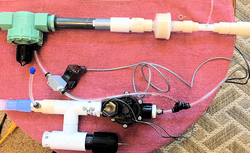

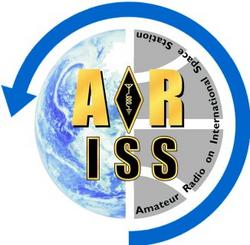 favorable location for an ISS pass on the scheduled day makes the contact and handles two-way audio between the station and the contact site. ARISS said its new multipoint telebridge approach permits simultaneous reception by families, school faculty, and the public.
favorable location for an ISS pass on the scheduled day makes the contact and handles two-way audio between the station and the contact site. ARISS said its new multipoint telebridge approach permits simultaneous reception by families, school faculty, and the public.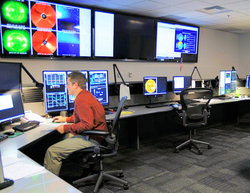
.JPG)
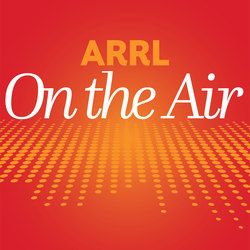 to create a family emergency communications plan and includes an interview with Dino Papas, KL0S, about attaching coaxial connectors with crimping tools.
to create a family emergency communications plan and includes an interview with Dino Papas, KL0S, about attaching coaxial connectors with crimping tools.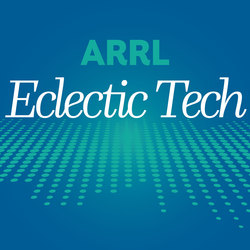 Manager Bob Allison, WB1GCM, about key clicks and a discussion with NCJ editor Scott Wright, K0MD, about artificial intelligence software and amateur radio.
Manager Bob Allison, WB1GCM, about key clicks and a discussion with NCJ editor Scott Wright, K0MD, about artificial intelligence software and amateur radio.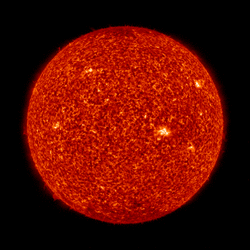 Predicted planetary A index is 8 on April 30 - May 2; 5 on May 3 - 17; 10 and 8 on May 18 - 19; 5 on May 20 - 23; 8 on May 24 - 27; 5 on May 28 - 31; 12 on June 1, and 5 on June 2 - 13.
Predicted planetary A index is 8 on April 30 - May 2; 5 on May 3 - 17; 10 and 8 on May 18 - 19; 5 on May 20 - 23; 8 on May 24 - 27; 5 on May 28 - 31; 12 on June 1, and 5 on June 2 - 13.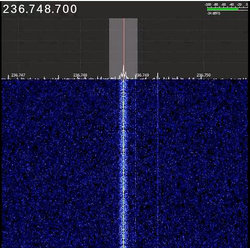 radio signals from the experimental UHF military communication satellite LES-5. Tilley says he found the satellite in what he called a geostationary "graveyard" orbit after noting a modulated carrier on 236.7487 MHz.
radio signals from the experimental UHF military communication satellite LES-5. Tilley says he found the satellite in what he called a geostationary "graveyard" orbit after noting a modulated carrier on 236.7487 MHz.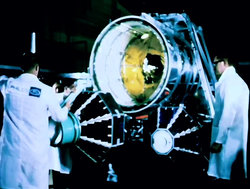
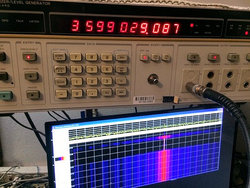 Modern HF transceivers can measure frequency quite accurately, and SDR-based receivers and available software can enable precise frequency measurements. Today's FMT leaders are able to accurately measure beyond the number of decimal places (out to five) that a typical transceiver will display, however.
Modern HF transceivers can measure frequency quite accurately, and SDR-based receivers and available software can enable precise frequency measurements. Today's FMT leaders are able to accurately measure beyond the number of decimal places (out to five) that a typical transceiver will display, however.  He said help lines now in operation receive many calls, including distress calls. "If anyone is in need of emergency medical care, we immediately inform the respective taluk office and the ambulance desk, so that help reaches in time," he said.
He said help lines now in operation receive many calls, including distress calls. "If anyone is in need of emergency medical care, we immediately inform the respective taluk office and the ambulance desk, so that help reaches in time," he said..jpg) capabilities in equipment that is also capable of transmitting in another service, with the exception of Part 15 unlicensed services.
capabilities in equipment that is also capable of transmitting in another service, with the exception of Part 15 unlicensed services. communication to help reduce loneliness and isolation within communities," said Paul Devlin, of the NHS England Emergency Care Improvement Support Team. "Amateur radio provides a wonderful, unprecedented opportunity to help make this a reality." The RSGB is urging radio amateurs in the UK and around the globe to get on the air to chat and "support each other across the airwaves."
communication to help reduce loneliness and isolation within communities," said Paul Devlin, of the NHS England Emergency Care Improvement Support Team. "Amateur radio provides a wonderful, unprecedented opportunity to help make this a reality." The RSGB is urging radio amateurs in the UK and around the globe to get on the air to chat and "support each other across the airwaves." the world, regardless of geographic location or connection to domestic power supplies, land lines, cell phone, or internet services. It will be on the air as part of this campaign, so listen out for it!"
the world, regardless of geographic location or connection to domestic power supplies, land lines, cell phone, or internet services. It will be on the air as part of this campaign, so listen out for it!"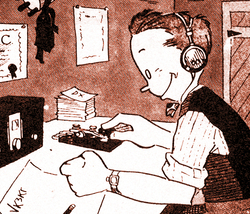 Live CTU sessions via Zoom will get under way on Thursday, May 14, 1245 UTC, and will be recorded and archived. -- Thanks to CTU Chair Tim Duffy, K3LR
Live CTU sessions via Zoom will get under way on Thursday, May 14, 1245 UTC, and will be recorded and archived. -- Thanks to CTU Chair Tim Duffy, K3LR







